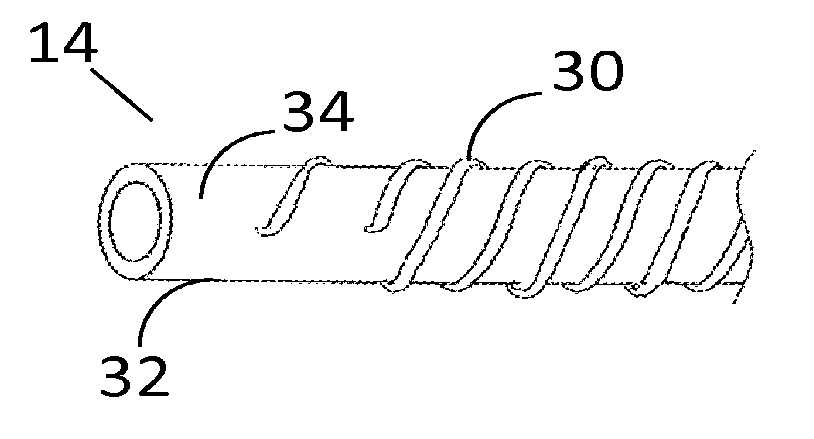Method of manufacturing a catheter sheath
a manufacturing method and catheter technology, applied in the field of catheter sheaths and manufacturing methods, can solve the problems of slow and expensive manufacturing process of catheters, patient risk, and difficulty in using adhesives,
- Summary
- Abstract
- Description
- Claims
- Application Information
AI Technical Summary
Benefits of technology
Problems solved by technology
Method used
Image
Examples
Embodiment Construction
[0028]FIG. 1 depicts a heart catheter 10. The catheter includes a handle 11, and an elongate catheter sheath 12 extending from the handle 11. The catheter sheath 12 consists of a generally tubular member 14 having a proximal end 16 connected to the handle 11 and a distal end 18 having one or more electrodes 20 attached to the tubular member 14.
[0029]The electrodes 20 are in predetermined, axially spaced locations between the proximal end 16 and the distal end 18 of the tubular member 14. Although electrodes of different shapes may be used, an annular electrode ring 20 having an inside diameter equal to or greater than the outside diameter of the tubular member 14 is shown in the accompanying figures. The electrode ring 20 is preferably a platinum-iridium ring but may be made of other suitable conductive material. The inner diameter of each ring approximates the outer diameter of the tubular member 14 so that each ring electrode 20 is a snug fit about an external surface of the tubul...
PUM
 Login to View More
Login to View More Abstract
Description
Claims
Application Information
 Login to View More
Login to View More - R&D
- Intellectual Property
- Life Sciences
- Materials
- Tech Scout
- Unparalleled Data Quality
- Higher Quality Content
- 60% Fewer Hallucinations
Browse by: Latest US Patents, China's latest patents, Technical Efficacy Thesaurus, Application Domain, Technology Topic, Popular Technical Reports.
© 2025 PatSnap. All rights reserved.Legal|Privacy policy|Modern Slavery Act Transparency Statement|Sitemap|About US| Contact US: help@patsnap.com



